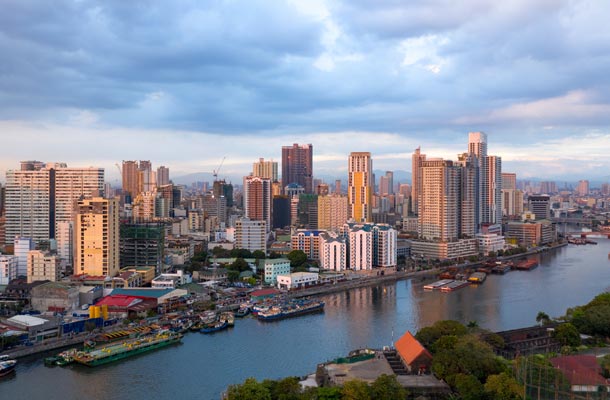What is the outlook for shipping and logistics to and from the Philippines?

With the worst global pandemic in 100 years, many challenges face shipping and logistics to and from the Philippines.
There have always been regional logistics challenges, isolated and unique to those regions. However, for the past 11 months, the pandemic has created a global set of challenges that almost every major port in the world is experiencing. The Philippines is no exception. Current challenges include:
- Very high rates
- Congestion
- Longer transit times
- Blank sailings
- Aircraft taken offline
- Lack of equipment
Regarding Imports to the Philippines, since the quarantine period began, there have been delays such as:
- The unpredictable arrival of vessels
- Customs
- Delayed issuance of the invoices and/or delivery orders
- Internet connection problems/issues
- Limited labor force
The customs clearance process which took no more than two days before the pandemic is now averaging four to five days. This time frame is affected by the limited workforce. Some positive news, there have been recent improvements by the Philippines BOC (Bureau of Customs) including the hiring of more customs officials and the new e-customs clearance system. However, the clearance process still requires additional improvements and refinements to speed and automate the process.
Other shipping issues in the Philippines include issues with operations:
- Irregular or no flight schedules do to closed offline global airports
- Some airlines currently are not flying out of Cebu or Manila
- Some airlines are not offering express rates
- Space availability
- Equipment shortages with ocean shipping lines
- Some ocean carriers are not accepting bookings or they cancel bookings due to "non acceptance" at origin/destination for lack of space and/or trans-ship hub congestion
- Some air carriers, ocean carriers and consolidators may not communicate any delay notices departures or delays in transit
- Carriers may change originally scheduled vessels in trans-ship ports, resulting in longer transit times
- Delayed connecting flights
- Perishable goods may not be prioritized and spoilage is a problem
- Advance export/import clearance processing is no longer allowed in the Philippines, due to the recent misdeclaration of an endangered species shipment that was exported from PH and was found to have no proper documents in Singapore
Port Problem and Factors
- Many ports are also experiencing delays due to inefficiencies, including shortages of the proper crane and other equipment or inadequate port space
- Shortage of port and airport personnel due to Covid-19 pandemic
- Lack of communications with airlines and shipping lines. For shippers and forwarders this challenge is very time-consuming and slows up processing. Most cp numbers are not working or out of reach. Customer service is poor since many are working at home without the level of supervision we have seen in “normal” times
We see in the future that shipping will be experiencing delays and failures globally and in the Philippines. These delays and lack of communication affect us all.
We find that freight forwarding companies are in a critical stage today as they need to be competitive, adaptive, and much more. We are all now adjusting to the “new” normal.
We predict that for both Air and Ocean shipping, rates and expenses will continue to be high. We have found peak season and arbitrary surcharges being charged by most of the ocean carriers. Some of these increases seem to be generating profits, possibly making up for some of the huge losses the carriers absorbed when the market had overcapacity and extremely low rates.
Currently, the ability to purchase container space on a vessel becomes a herculean task. Securing space on “next vessel” sailing, even after you get a rate quote, is maybe a 50/50 chance at best. The likelihood is that bookings for container space will be pushed out three or four weeks.
Additionally, rate guarantees are shorter. Instead of 30 days during pre-COVID-19, now it’s just two weeks. At times, surcharges are being charged and those can be changed again at time of booking.
To manage your way through many types of obstacles, please contact our DGX Philippine office for a free consultation: email us here or call us today at +63 2 7738 3359.